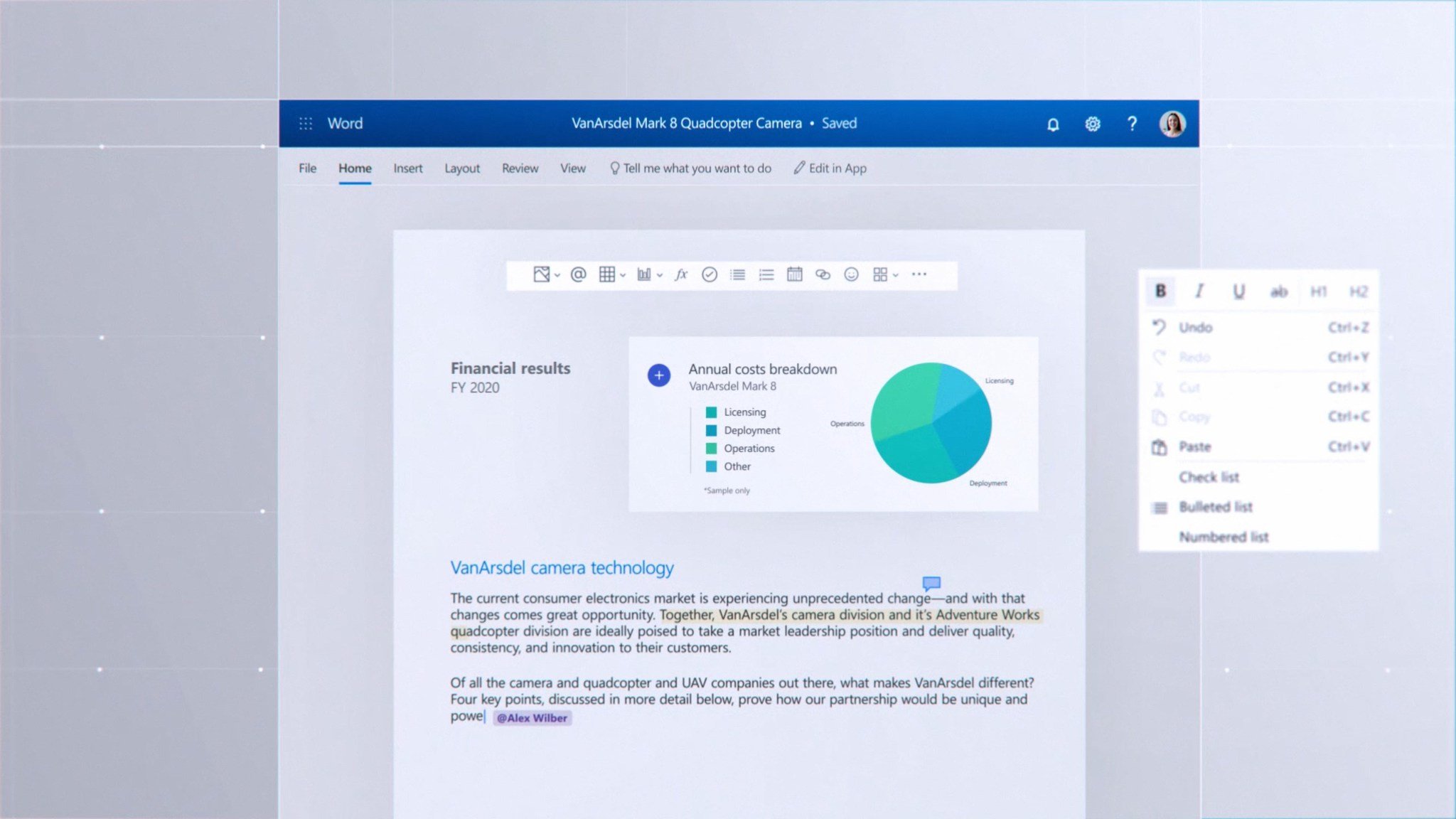Microsoft's new Fluid components are building blocks for Office that work anywhere
Microsoft is taking its vision for cross-platform collaboration even further with Office components that you can edit anywhere.

What you need to know
- Microsoft's Fluid components allow people to work on Office elements outside of apps.
- Content like tables and charts can be edited wherever people paste them.
- The technology is open-source and will eventually work with third-party apps.
Microsoft is introducing a new approach to Office documents and productivity called Fluid components. These components can be pieced together like Lego bricks across several apps and the web. Components include tables, graphics, and lists that are standard in Microsoft Office, but you can collaborate and work on them outside of traditional documents. The Verge broke the news about Fluid components earlier today and explained how they work.
Fluid components can be edited in real time in time by several people across various applications. For example, you could create a table and use it where you need it without having to jump between several apps. Created components like the table example would be on the web, accessible for people to edit from anywhere. The idea is that these components can be edited wherever someone pastes them, such as in an email chain, Microsoft Teams, or eventually third-party apps.
Jared Spataro, head of Microsoft 365, told The Verge, "Imagine you could take those Lego pieces and put them in any place you wanted: in emails, in chats, in other apps," adding, "As people work on them, they will always be updated and contain the latest information." Spataro also points out "That Fluid [components are] rendered entirely in-line in an experience in which [they're] embedded."
Microsoft's Fluid Framework is open-source, allowing developers and organizations to work with it. Microsoft will detail at this week's Build conference how third-party developers can utilize Fluid in their own applications.
The core idea of Fluid is an extension of what Microsoft has already worked towards, editing documents and working together across platforms with people in real-time. But Fluid takes it a step further, allowing you to edit different types of content without jumping across apps. Maya Rodriguez, a principal program manager at Microsoft's Fluid Framework states, "It's about helping people achieve a particular task… It's not about requiring them to decide 'Which app do I go to?' or 'Which document do I get back to?"
Some Office.com users will get to use parts of Fluid later this week, according to The Verge. Fluid's rollout will be gradual, according to The Verge, and will start with Office.com and Outlook on the web. It will then appear in Microsoft Teams later this year and the desktop versions of Outlook next year. Over time, Fluid components should be built into all Office applications.
All the latest news, reviews, and guides for Windows and Xbox diehards.

Sean Endicott is a tech journalist at Windows Central, specializing in Windows, Microsoft software, AI, and PCs. He's covered major launches, from Windows 10 and 11 to the rise of AI tools like ChatGPT. Sean's journey began with the Lumia 930, leading to strong ties with app developers. Outside writing, he coaches American football, utilizing Microsoft services to manage his team. He studied broadcast journalism at Nottingham Trent University and is active on X @SeanEndicott_ and Threads @sean_endicott_.
